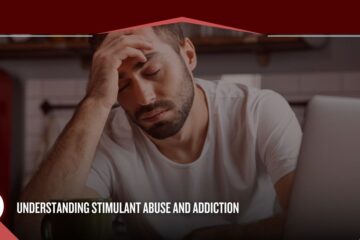In the ever-evolving landscape of drug policy, a significant shift is taking place. The concept of decriminalizing drug use and possession is gaining traction worldwide. This approach, which separates the issue of drug use from the realm of criminal justice and places it firmly within the sphere of public health, has sparked a global debate. For example, Alamo Behavioral Health inpatient rehab in San Antonio and other such facilities are a critical part of the community’s response to drug addiction, and the implications of such a policy change are profound. Decriminalization could potentially redefine the role of these institutions. Furthermore, it could alter how they interact with drug users and the wider healthcare system.
Here, we will explore the impact on public health, the criminal justice system, drug-related violence, and issues of human rights and social justice. Also, we will examine potential pitfalls, including misinterpretation of it as legalization, uncertain effects on drug use rates, limited impact on drug trafficking, resource allocation challenges, and political and social opposition.
Benefits of Decriminalizing Drug Use and Possession
Drug decriminalization is a policy approach that removes criminal penalties for drug use and possession. Instead of punishment, it emphasizes:
- Harm reduction
- Treatment and prevention
- Reducing the stigma of drug use and possession

One of the main benefits of decriminalizing drug use and possession is a shift in public health focus. It moves away from punitive measures and toward rehabilitative approaches. This shift can lead to increased access to drug treatment and harm reduction services. For example, a person struggling with meth addiction might find it easier to access a meth detox in Texas program under a decriminalization model.
Reducing the stigma and drug-related violence
Decriminalization can reduce the stigma associated with drug use. This reduction in stigma can lead to better health outcomes for drug users. They are more likely to seek help when they need it without fear of legal repercussions. Decriminalization also has a significant impact on the criminal justice system. It can reduce the burden on law enforcement and prisons, freeing up resources for more serious criminal activities. This shift can lead to decreased incarceration rates and associated costs.
In terms of drug-related violence, decriminalization can disrupt black markets and organized crime involvement. This disruption can lead to lower levels of drug-related violence and homicides. Decriminalization can have profound effects on human rights and social justice. It can help mitigate racial disparities in drug law enforcement, a pressing issue in many communities. It also protects individual freedoms and civil liberties.
Diversity of Detox Center Clients
It is possible that a drug detox program in Texas sees a more diverse range of clients under a decriminalization model. This diversity could reflect a more equitable approach to drug law enforcement. Moreover, decriminalization can lessen the negative effects on vulnerable populations. These groups often bear the brunt of punitive drug laws, facing barriers to employment, housing, and social services due to criminal records. Drug decriminalization can bring about significant benefits to public health, the criminal justice system, and social justice. However, it’s essential to consider these benefits alongside potential drawbacks.
Drawbacks of Decriminalizing Drug Use and Possession
While decriminalization has its benefits, it’s not without drawbacks. One potential issue is the misinterpretation of decriminalization as legalization. This confusion can lead to a perception of a lenient approach, potentially increasing drug use.
The impact on drug use rates is uncertain. Some argue that decriminalization could lead to an increase in drug consumption. For example, the availability of a fentanyl detox in Texas might inadvertently encourage some to experiment with the drug, knowing that help is available if needed. Others believe it could decrease use by removing the ‘forbidden fruit’ allure of drugs.
Another concern is the potential gateway effect. Decriminalization might lead to experimentation with harder drugs. The debate continues with no clear consensus.
Decriminalization might have a limited impact on drug trafficking. Illegal drug markets could still exist, and disrupting drug supply chains and transnational trafficking remains a challenge.
Resource allocation is another potential drawback. Decriminalization could strain healthcare and treatment services. For instance, a sudden increase in demand for heroin detox in Texas could put pressure on existing resources. Balancing resources between public health and the criminal justice sectors could become a complex issue.
Political and social opposition can pose significant challenges. Conservative groups and anti-drug advocates often resist decriminalization. Gaining public support and implementing policy changes can be a daunting task in the face of such opposition. While decriminalization offers many benefits, it’s crucial to consider these potential drawbacks. The path to drug policy reform is complex and requires careful consideration of all aspects.

Case Studies and International Examples
To better understand the impact of drug decriminalization, let’s look at some international examples. These case studies show the varied approaches and outcomes of drug decriminalization and legalization. They offer valuable insights for other countries considering similar paths.
The Netherlands
The Netherlands takes a mixed approach, tolerating some drugs while cracking down on others. This policy has resulted in a separation of markets for soft and hard drugs, reducing the ‘gateway’ effect. However, it has also led to some challenges, such as managing drug tourism and organized crime.
Uruguay
Uruguay went a step further, legalizing marijuana in 2013. The aim was to combat drug trafficking and promote public health. While it’s too early to assess the full impact, initial reports suggest a decrease in drug-related crime.
Portugal
Portugal is a success story in drug decriminalization. In 2001, Portugal decriminalized all drugs, focusing on treatment over punishment. The result? A significant drop in drug-related deaths and HIV infection rates. This approach could inspire changes in places like the US, where an opiate detox center in Texas could shift from being a last resort to a first step in a supportive recovery process.

Alamo Behavioral Health’s Role in a New Era of Drug Policy
Decriminalizing drug use and possession presents a complex issue with significant benefits and potential drawbacks. As we navigate this challenging landscape, organizations like our Alamo Behavioral Health play a crucial role. Presenting a lot of services, including detox and rehabilitation, Alamo Behavioral Health stands ready to provide help 24/7. Whether it’s the shift towards a more rehabilitative approach or managing the potential increase in demand for services, we are equipped to adapt and respond. As the conversation around drug policy reform continues, the commitment of such institutions to compassionate, effective care remains a constant.





